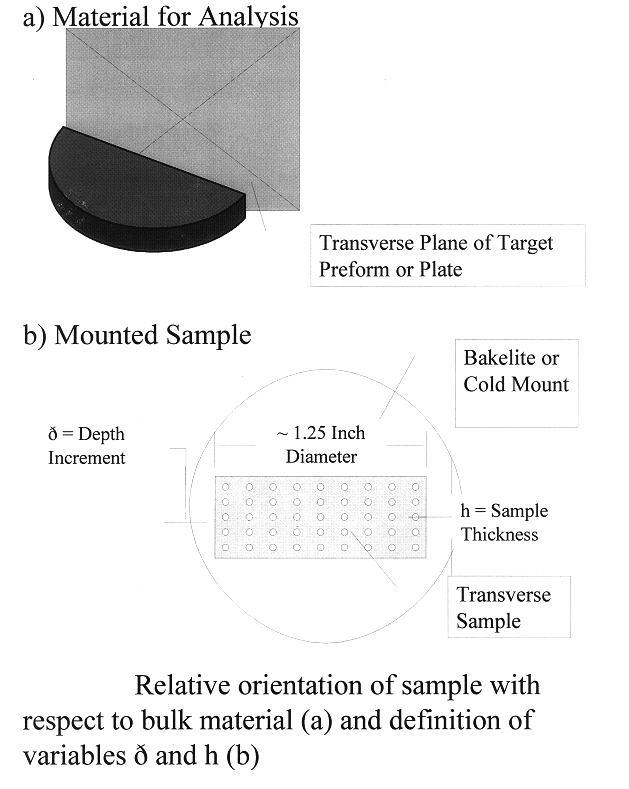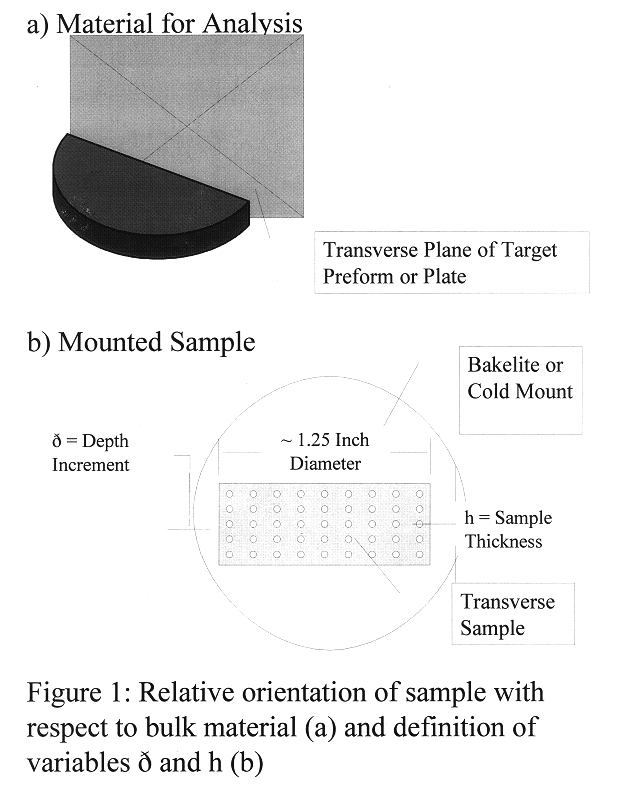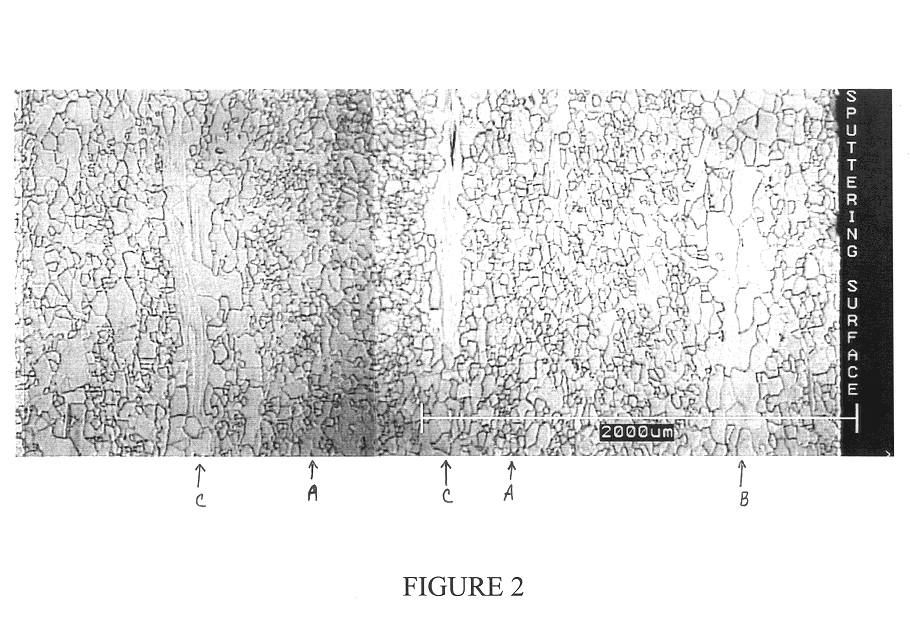Method for quantifying the texture homogeneity of a polycrystalline material
a polycrystalline material and texture homogeneity technology, applied in material analysis using wave/particle radiation, instruments, nuclear engineering, etc., can solve the problems of inability to identify the presence of texture homogeneity within the sample, and visual representations of texture can only provide a general idea of texture homogeneity
- Summary
- Abstract
- Description
- Claims
- Application Information
AI Technical Summary
Benefits of technology
Problems solved by technology
Method used
Image
Examples
example 1
This experiment was conducted to demonstrate the correlation between microstructural and textural inhomogeneities within a tantalum plate of poor metallurgical quality. Sputtering target-grade wrought and recrystallized 0.25" thick tantalum plate was obtained on the commercial market. Results of chemical, metallurgical, and mechanical properties are provided in Table 1. A sample approximately 0.25".times.1.0".times.0.5" was removed from a region approximately 0.5" or more away from any sheared edge of the plate. The sample was mounted, and the transverse face of the sample of the sample was ground, polished, and etched. The texture samples were prepared in accordance with the procedure described in C. A. Michaluk, C. Heubeck, and H. Klein, Methodologies for Determining the Global Texture of Tantalum Plate Using X-Ray Diffraction, Tantalum, (E.chem. et al., eds), TMS, Warrendale, Pa. (1996) pp 123-131, incorporated in its entirety herein by reference, with the exception that the as-p...
example 2
This analysis was conducted to determine values of .OMEGA. and .LAMBDA. for tantalum deemed unacceptable for use as a sputtering target. FIG. 7 shows a section of a tantalum sputtering target that the user rejected because it produced films with unacceptable variation in thickness (i.e. >5%). The eroded surface of the rejected target had large regions having a matte finish intermixed with areas having a lustrous finish. Texture analysis revealed that the matte surfaces contained a mixed (111)-(001) texture while the texture of lustrous regions was nearly entirely (001). It is been reported that the matte regions represent material that was readily eroded by sputtering, whereas the lustrous areas were resistant to sputter erosion, indicating that localized regions having a prominent (001) within a tantalum sputtering target are detrimental to sputtering performance (C. A. Michaluk, D. B. Smathers, and D. P. Field, Affect of Localized Texture on the Sputtering Performance of Tantalum,...
example 3
This example determines values of .OMEGA. and .LAMBDA. for a tantalum sputtering target that exhibited desirable sputtering performance, as well as for a tantalum target that had marginal sputtering performance. Photographs of the desirable and marginal performing sputtering targets are shown in FIGS. 12 and 13, respectively. Normal-orientation IPF maps from transverse sections of the desirable and marginal performing targets are presented in FIGS. 14 and 15, respectively. Samples had been prepared and analyzed using the procedures described in Example 1.
The texture homogeneity parameters of the desirable and marginal performing tantalum targets are reported below:
Based on the results from Example 2, tantalum material having values of .OMEGA. and .LAMBDA. less than or equal to 74.73 / mm and 4.993 / mm, respectively, are best suitable for sputtering target applications.
PUM
| Property | Measurement | Unit |
|---|---|---|
| Length | aaaaa | aaaaa |
| Length | aaaaa | aaaaa |
| Length | aaaaa | aaaaa |
Abstract
Description
Claims
Application Information
 Login to View More
Login to View More - R&D
- Intellectual Property
- Life Sciences
- Materials
- Tech Scout
- Unparalleled Data Quality
- Higher Quality Content
- 60% Fewer Hallucinations
Browse by: Latest US Patents, China's latest patents, Technical Efficacy Thesaurus, Application Domain, Technology Topic, Popular Technical Reports.
© 2025 PatSnap. All rights reserved.Legal|Privacy policy|Modern Slavery Act Transparency Statement|Sitemap|About US| Contact US: help@patsnap.com



